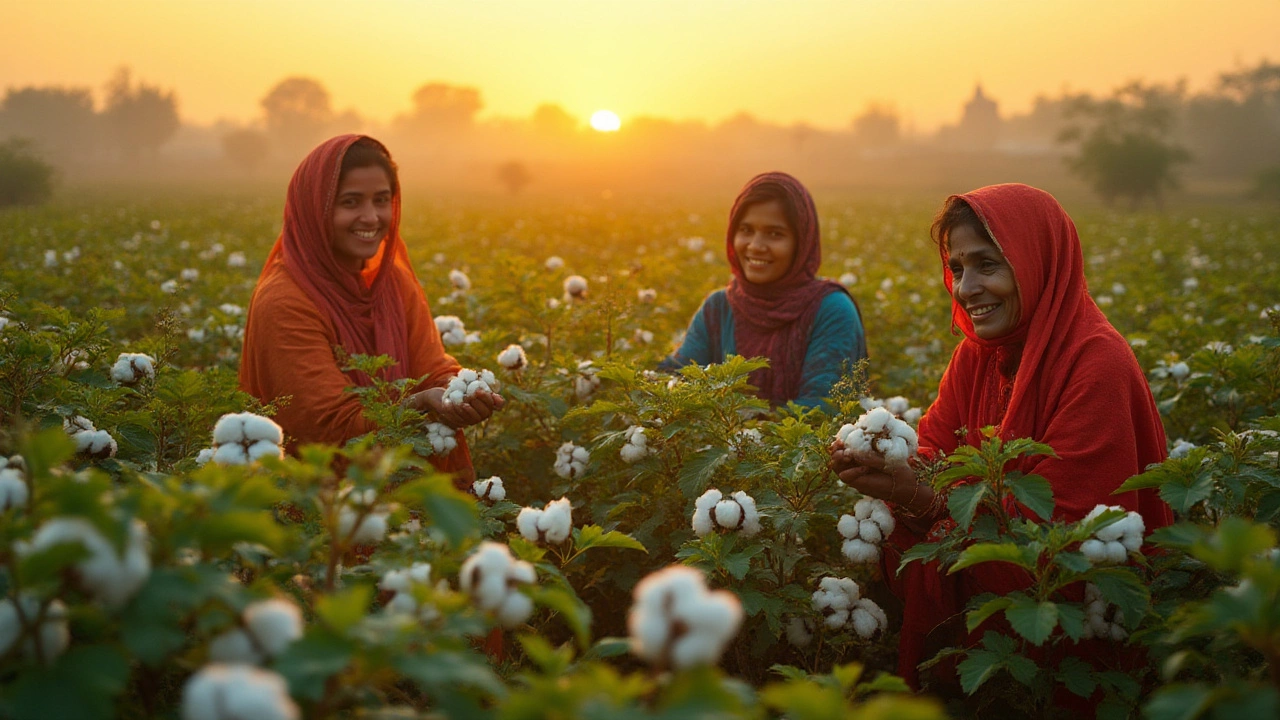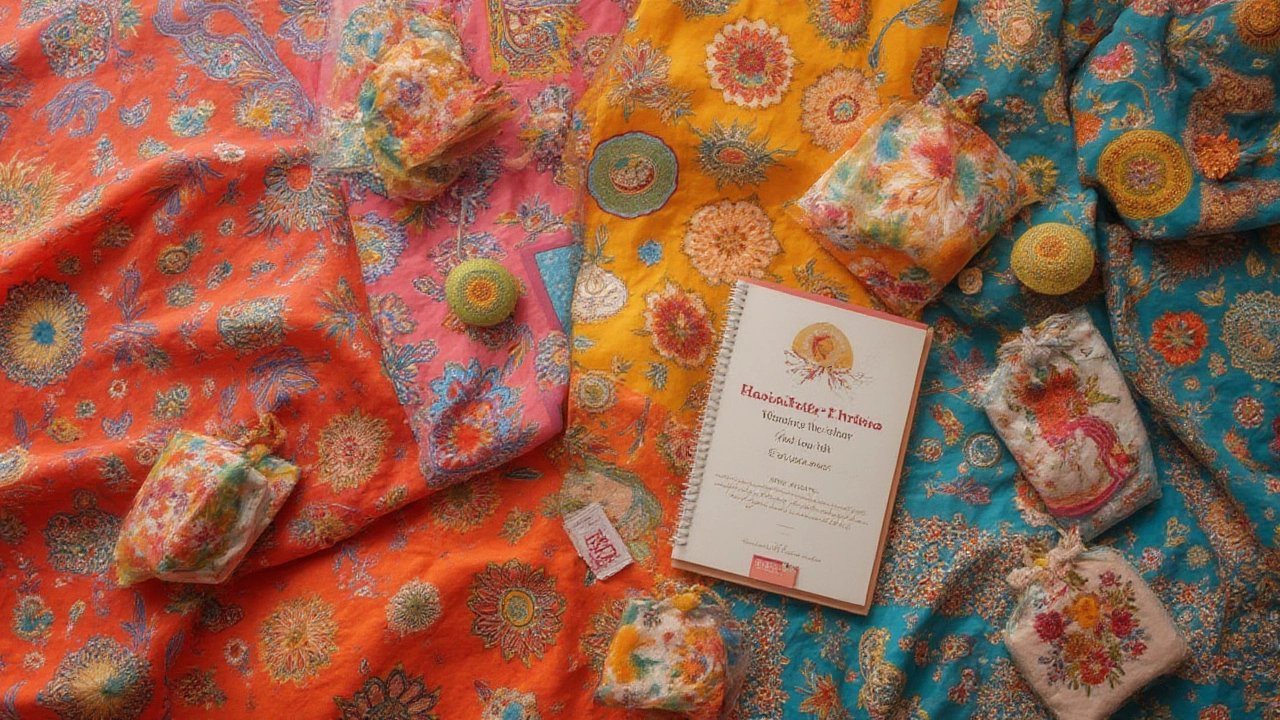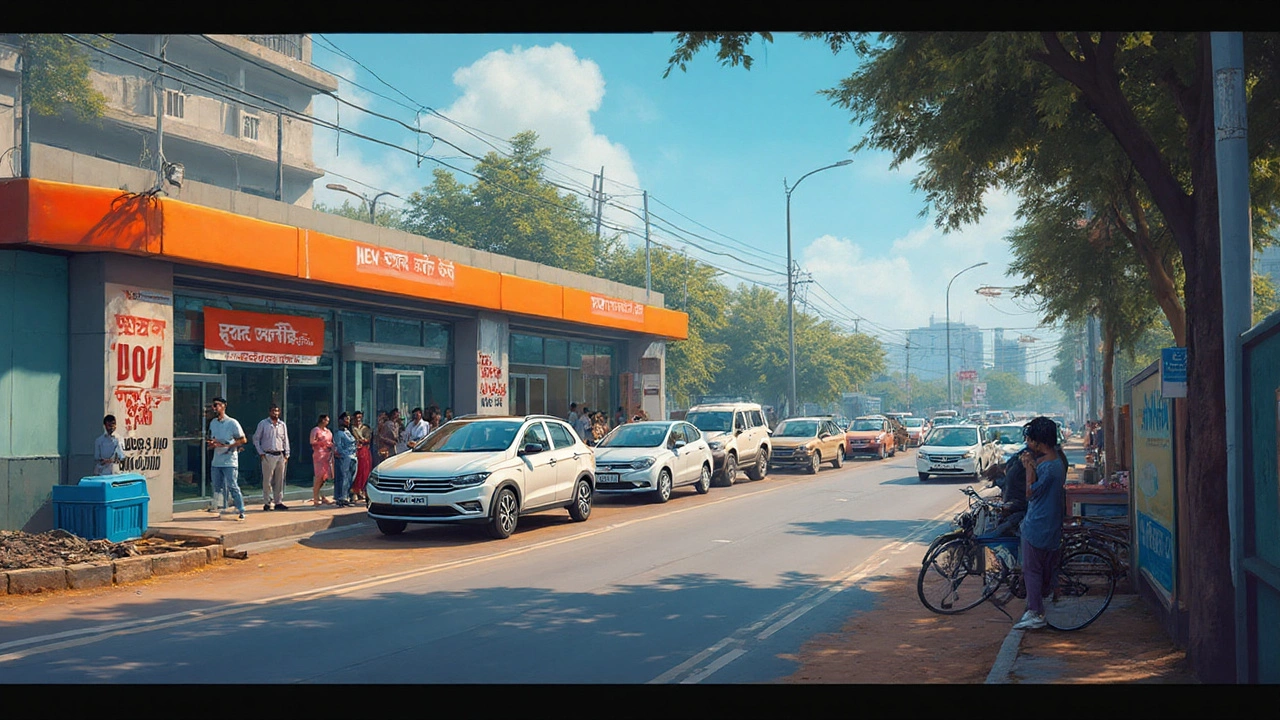Queen of Textiles: Why Cotton Dominates the Global Textile Industry

Walk into any closet on the planet. Chances are, the first thing your hand touches is something made of cotton. This fabric isn’t just popular—it’s iconic. Throughout history, legends have swirled around different textiles. Silk had the mysterious Silk Road and royal courts. Linen stretched back to Egyptian tombs. But when you talk about the “queen of textiles,” there’s a clear winner. Cotton wears the crown, and for good reason. This fabric isn’t just everywhere—it has stitched itself into the story of civilization, revolution, and everyday life like nothing else.
The Rise of Cotton: How It Became the Queen
Cotton didn’t start out on a throne. Its story began quietly, growing wild in places like India, Egypt, and the Americas, long before fast fashion and industrial looms. Indian weavers started making cotton cloth as early as 3000 BCE. Soon, the world caught on. Ancient Romans called cotton "the tree wool," marveling at fabric that felt soft and cool, so different from scratchy animal fibers.
The real game-changer came with the invention of the cotton gin in 1793. Eli Whitney’s simple machine could separate cotton seeds from fibers at breakneck speed. Suddenly, what had once been a slow, back-breaking process turned fast and profitable. Factories mushroomed across Britain and America. Jeans, T-shirts, bedsheets, towels—suddenly, they were everywhere, and just about everyone could afford them.
Cotton’s adaptability is part of the magic. It grows in hot, tropical, and even dry regions, thriving in more than 80 countries. The U.S., India, China, and Brazil lead in cotton farming, but you’ll find small fields from Mali to Uzbekistan. What makes cotton rule over other fabrics? It’s breathable, absorbent, non-allergenic, soft, and easy to dye. It’s also durable enough for grandma’s famous quilts and baby’s first onesies.
The numbers make you pause. Every year, people across the world use over 25 million tons of cotton. It’s about half of all the clothes we wear. Cotton’s journey isn’t just about plants and factories. It shaped economies, sparked revolutions, and changed the rhythms of work for millions. You can’t talk about the Industrial Revolution, the American South, or Gandhi’s push for Indian independence without mentioning cotton.
But cotton hasn’t been just about mass production and cheap T-shirts. Its pedigree stretches to the world’s biggest fashion houses. Chanel’s summer collections feature crisp cotton poplin. Ralph Lauren built an empire on the humble cotton polo. Want proof that cotton is the people’s fabric? Check a farmer’s shirt, a music star’s faded jeans, and a newborn’s swaddle: most will be cotton. That’s not just ubiquity—it’s textile royalty.
What Makes Cotton So Special?
Let’s get into the details—the things that make cotton so hard to beat in the textile world. Cotton fibers are made of pure cellulose, a plant-based polymer. That sounds technical, but simply put, it means the fiber breathes better and wicks away moisture far more efficiently than, say, polyester. Forget that sticky, trapped-sweat feeling on a hot day. Cotton lets your skin breathe, which is why doctors and athletes swear by it.
Durability is another ace in cotton’s hand. Cotton fibers are twisted and spun together, creating fabric that stands up to repeat washes and wear. Have you ever noticed how cotton T-shirts get softer, not scratchier, the more you wash them? That’s thanks to the way cellulose reacts to water. Plus, when the fabric gets dirty, it can stand up to scrubbing better than silk or linen. This makes cotton perfect for everyday essentials like towels and sheets.
Allergies giving you trouble? Unlike some animal fibers, cotton is naturally hypoallergenic. No wonder hospitals, baby brands, and skincare fanatics rave about it. Need it in bright colors or trendy prints? Cotton takes dye brilliantly, so manufacturers can produce everything from blue jeans to tie-dyed tees and floral dresses, without the patterns fading after a few washes.
It isn’t just about practical perks. Cotton is steeped in traditions, too. Think of quilting circles, darning socks, or those little muslin cloths grandmas use for straining soup. Farmers in India still celebrate the harvest with cotton garlands and songs. No other textile ties together ancient craft and modern technology quite like cotton does.
Here’s an underrated bonus: cotton is biodegradable. Unlike synthetics that sit in landfills for centuries, pure cotton fabrics break down faster and don’t leach microplastics into the soil or sea. There’s a whole green side to cotton’s legacy.
If you’re choosing between synthetic and natural fabrics for your next DIY project or wardrobe update, opt for cotton where possible. Here’s a pro tip: Always check the tag for “100% cotton.” Blends can feel similar, but if comfort and breathability top your list, pure cotton beats blends every time.

Fascinating Cotton Facts and Figures
Did you know a single cotton plant blooms with large, fluffy white bolls that stand out in the fields like clouds? It takes about 1,500 liters of water to produce just 1 kg of cotton—but not all cotton is equally thirsty. Some modern strains and careful irrigation mean less water used per shirt, especially if farmers use techniques like drip irrigation or rain-fed cropping.
There’s more than one kind of cotton out there. Egyptian cotton and Pima cotton are both prized for their extra-long fibers, making towels and bedsheets softer and stronger. If you’ve ever had hotel sheets that made you want to never get up, chances are they boasted high-thread-count cotton from one of these varieties.
On the economic side, cotton supports the livelihoods of nearly 100 million families worldwide. In places like West Africa, cotton is called “white gold”—the crop that keeps small economies afloat. “Cotton remains one of the most significant agricultural commodities globally, sustaining millions of farming communities,” reports the International Cotton Advisory Committee.
“The story of cotton is the story of modern civilization—where there is progress, you’ll usually find cotton.” — Smithsonian Magazine
For fashion buffs, denim, which you might think is all about blue jeans, is actually 100% cotton too, woven in a special diagonal pattern. Stretch jeans blend in some elastane, but the backbone is strong cotton fiber. Even luxury designers can’t resist cotton’s appeal; it balances simplicity and status in a way that synthetics or silk never quite manage.
Got sensitive skin? Dermatologists often recommend cotton undergarments and bedsheets. They reduce the chance of rashes, help with eczema, and let skin heal faster compared to polyester-based versions. Cotton doesn’t hold onto odors the way man-made fibers can, either—less stink after a sweaty day or workout.
Want to help the planet with your fashion choices? Choose organic cotton when you can—it skips harmful pesticides and keeps farmers safer. In 2023, brands reported that demand for organic cotton clothing shot up by over 10%, as eco-conscious shoppers became more vocal about their choices.
Keep your cotton looking fresh by washing items in cold or warm water—not hot. Air-drying helps prevent shrinkage and saves energy. Bright colors? Turn your clothes inside out to protect the shades.
Tips for Choosing, Using, and Caring for Cotton
When it comes to buying cotton, not all labels are equal. Look for certain hallmarks if you want the best: “Egyptian,” “Pima,” or “Supima” cotton on tags means longer fibers and softer, longer-lasting fabric. If you’re a bedding buff, check the thread count—ideally between 200 and 800. Too high, and you risk fabric that feels less breathable (it’s a real thing!).
If you care about sustainability, search for clothes or bedding marked with GOTS (Global Organic Textile Standard) or Better Cotton Initiative (BCI) certifications. These labels signal more responsible farming—less water, fewer chemicals, and fair treatment for workers. Don’t fall for greenwashing. Simply because a sign says “eco” doesn’t always guarantee it.
In your closet, cotton is a workhorse that needs less TLC than delicate synthetics or wool, but a few good habits help. T-shirt got stretched out? After a gentle wash, lay it flat to reshape while damp, and it’ll bounce right back. Jeans losing that deep indigo? Add a cup of vinegar to the rinse cycle to help lock in color. If static is driving you nuts, a quick swipe with a damp hand works wonders, since cotton holds less charge than polyester.
To cut down on ironing, pull cotton shirts out of the dryer when they’re still a bit damp and hang them up—creases will fall out on their own. If you spill something, move fast: dab with cold water and mild soap, as heat can set some stains permanently.
For crafters and hobbyists, cotton is a dream to work with. Whether you’re quilting, making reusable grocery bags, or sewing summer shirts, cotton’s forgiving nature saves a ton of frustration. Fabrics like muslin and calico provide affordable, easy-to-sew options for projects big or small.
If allergies bother you, remember that even organic cotton sheets are breathable and soft, perfect for kids’ rooms or anyone with tender skin. Hospitals use special medical-grade cotton because it’s absorbent and safe for wounds.
Just remember that even the queen of textiles doesn’t last forever. When cotton clothes wear thin, get creative—turn shirts into cleaning rags, or pillowcases into tote bags. Pure cotton biodegrades naturally in compost or landfill, unlike synthetic blends.
Next time you slide into bed and feel that soft, cool sheet or reach for a favorite T-shirt that seems to get better with age, thank the humble cotton plant. It’s not just a fabric—it’s the backbone of everyday comfort, tradition, and style. In the world of textiles, there can be only one queen, and cotton’s reign shows no sign of slowing down.





